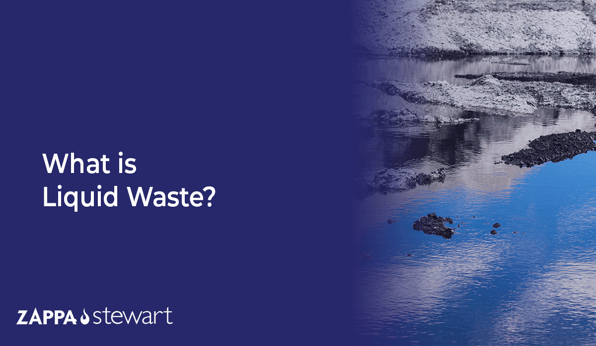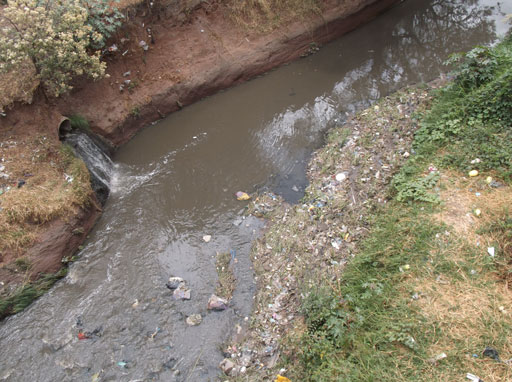Just How Fluid Garbage Disposal Functions: An In-depth Summary of Techniques and Technologies Used

Overview of Fluid Waste Kind
The complexity of fluid waste kinds requires a complete understanding of their characteristics and implications for disposal. Liquid waste can broadly be categorized right into several kinds, including industrial, municipal, agricultural, and dangerous waste. Each group exhibits distinct residential properties, calling for details administration strategies to alleviate ecological and health risks.
Industrial fluid waste originates from making processes and usually has an array of pollutants, such as hefty steels, solvents, and organic substances. Community liquid waste, largely making up wastewater from households and industrial establishments, consists of raw material, nutrients, and pathogens (industrial wastewater treatment). Agricultural liquid waste, consisting of overflow from farms, might have plant foods, chemicals, and animal waste, presenting risks to water high quality and ecological communities
Dangerous liquid waste is characterized by its poisoning, reactivity, or possible to trigger harm. Recognizing these varied liquid waste types is critical for establishing efficient disposal methods and making sure compliance with environmental regulations.
Physical Therapy Methods

Testing is the initial action, where bigger fragments and particles are removed from the liquid waste making use of displays or grates. This process secures downstream devices from damage and guarantees smoother procedure. Adhering to screening, sedimentation uses gravitational pressure to separate solids from liquids. In sedimentation tanks, larger particles work out at the bottom, forming a sludge layer, while the made clear liquid can be additional dealt with.
Filtration is an additional important technique that includes passing the liquid via permeable materials, such as sand or membrane layers, to capture smaller bits. This step improves the high quality of the fluid, making it appropriate for subsequent treatment processes.

Chemical Therapy Techniques
Chemical treatment techniques are important for effectively handling fluid waste, specifically in dealing with liquified and colloidal pollutants that physical approaches may not effectively remove. These techniques use different chemical representatives to reduce the effects of, precipitate, or transform hazardous compounds right into less unsafe forms.
One common approach is coagulation and flocculation, where chemicals such as alum or ferric chloride are added to promote the aggregation of suspended particles. This procedure improves sedimentation, enabling much easier elimination of the resulting sludge. Additionally, oxidation processes, using agents like chlorine or ozone, are employed to damage down complicated organic compounds and microorganisms, providing the waste much safer for discharge or further therapy.
Neutralization is one more vital method, which changes the pH of acidic or alkaline waste streams to neutral levels, preventing prospective damage to downstream systems and the setting. Moreover, advanced oxidation processes (AOPs) use combinations of oxidants and ultraviolet light to weaken consistent pollutants, accomplishing a greater degree of therapy performance.
Organic Therapy Procedures
Organic therapy procedures play an essential duty in the management of fluid waste by utilizing microbes to disintegrate organic issue and minimize pollutant degrees. These procedures can be generally categorized into anaerobic and cardiovascular treatments, each using certain microbial communities to achieve click to read effective waste deterioration.
Cardio therapy entails the usage of oxygen to facilitate the breakdown of organic materials by bacteria. This procedure is frequently carried recommended you read out in triggered sludge systems, where oygenation containers offer a conducive environment for microbial growth, leading to the oxidation of natural pollutants. The resultant biomass can be divided from dealt with effluent via sedimentation.
On the other hand, anaerobic treatment occurs in the lack of oxygen, depending on various germs to break down raw material. This method is especially advantageous for high-strength waste, as it creates biogas, a renewable power source, while decreasing sludge manufacturing. Technologies such as anaerobic digesters are regularly employed in metropolitan and commercial applications.
Both anaerobic and cardiovascular biological therapies not only decrease the ecological influence of fluid waste however likewise promote resource recovery, making them crucial elements of sustainable waste administration techniques. Their adaptability, efficiency, and effectiveness sustain their widespread application across different sectors.
Emerging Technologies in Disposal
Ingenious techniques to liquid waste disposal are rapidly evolving, driven by innovations in innovation and an increasing emphasis on sustainability. Among these arising innovations, membrane layer bioreactors (MBRs) have gotten traction for their ability to incorporate biological treatment with membrane layer purification, resulting in top notch effluent that can be reused in various applications. MBRs allow smaller sized footprints and a lot more effective procedures contrasted to conventional systems.
An additional appealing development is making use of anaerobic digestion integrated with nutrient healing innovations, which not only deals with liquid waste but additionally creates biogas and recoups beneficial nutrients like nitrogen and phosphorus. This double advantage improves source performance and reduces environmental influence.
In addition, progressed oxidation procedures (AOPs) are being adopted for the deterioration of complicated natural contaminants. These techniques utilize powerful oxidants and drivers to break down pollutants at the molecular level, providing an extremely efficient remedy for tough waste streams.
Additionally, the combination of fabricated intelligence and artificial intelligence in waste monitoring systems is maximizing functional performance and anticipating upkeep, leading to lowered costs and enhanced environmental compliance. These technologies mirror a substantial change in the direction of even more sustainable and reliable fluid garbage disposal practices.
Conclusion
In final thought, look at more info efficient fluid waste disposal demands a thorough understanding of various methods and innovations. The integration of physical, chemical, and biological treatment techniques makes certain the efficient administration of diverse waste types. Moreover, the emergence of innovative modern technologies improves treatment efficiency and promotes sustainability in waste management techniques. By constantly progressing these methods, it ends up being feasible to attend to the growing challenges related to liquid waste, inevitably adding to environmental management and source healing.
Fluid waste disposal is an essential element of ecological administration, calling for a comprehensive understanding of various methods and innovations customized to different waste kinds. Liquid waste can extensively be classified into a number of kinds, including commercial, metropolitan, agricultural, and hazardous waste. Agricultural liquid waste, including drainage from ranches, may consist of plant foods, chemicals, and pet waste, posing risks to water high quality and ecological communities.
Various physical therapy approaches play a critical function in managing fluid waste effectively - industrial wastewater treatment.In final thought, efficient liquid waste disposal necessitates a thorough understanding of various strategies and modern technologies
Comments on “Top Liquid Waste Disposal Melbourne: Trusted Providers for Appropriate Waste Administration”